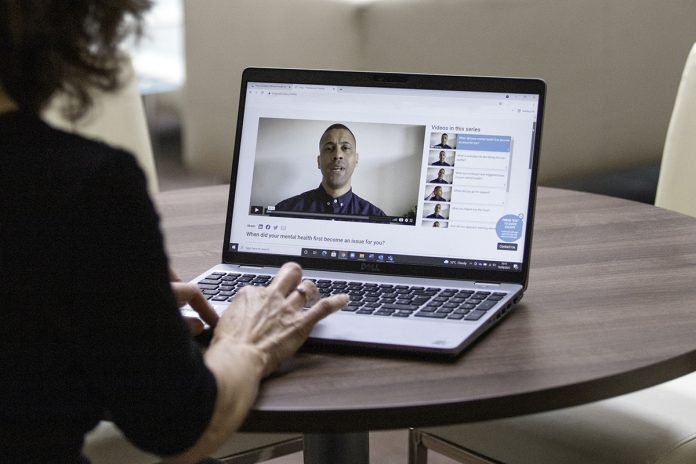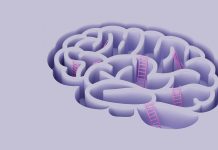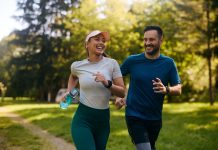Phil Worms, CEO of Frog Systems, explains how video-led signposting offers a new way to deliver well-being support
One of the key challenges identified over the past eighteen months is the need to break down more barriers around mental health and give individuals greater control over their wellbeing. As the long-term effects of the COVID-19 crisis become clearer, earlier action would avoid extra burdens on healthcare services that are already under stress and will be constrained by post-pandemic budgets.
But how do you motivate people to take steps towards more positive outcomes in their lives? Technology opens the possibility for individuals to take preventative measures, to bridge that gap between citizens and service providers. For this to succeed, people must be able to easily find — and trust — the support they seek, and it must be delivered in an easily consumable format.
The mental health and wellbeing solution we have developed at Frog Systems offers an answer. We have created a software platform called Ashia® that brings together curated lived experience videos, resources, and details of verified support organisations, all in one place – one safe space, where users can hear from others who have been through similar experiences and can access help with all aspects of their mental wellness and physical wellbeing.
Why video?
It is estimated that we retain 95% of what’s said in a video compared to just 10% when we read text. Framing communication as a visual story builds emotional and social connectedness which has a dramatic impact on action and engagement. Research is increasingly showing that hearing a peer’s truthful lived experience is more likely to prompt positive action. This makes video one of the best ways to deliver health and wellbeing messages to a population.
For instance, an NHS Trust partnership in the South of England is utilising a platform we built for a leading professional cricket club to reach young people in the region with positive health messages, something it felt it would not achieve using its traditional communications channels.
Combining the greatest tool of our increasingly visual world with advanced search means a user of our wellness platform can find support easily. They enter the topic they need help with and are presented with short, relatable video clips, relevant web-enabled resources and details of organisations offering help, all within one page, removing the frustration of endless and fruitless information searches on the internet.
Generating valuable insight
Of course, there is no point to this if it does not lead to action at the strategic level as well. This is why the data generated is so important in offering insight.
Each search is confidential, no private data is collected, so citizens can look for and contact support organisations without fear of being individually tracked. However, the organisations we build platforms for receive real-time analytics based on the anonymised user data. They can see what videos have the most views, what resources are accessed most, and which organisations have been contacted.
Importantly, the data is broken down by demographic and geography. This helps inform strategy. If there’s a spike in people seeking help with eating disorders, for instance, campaigns can be run, or new resources provided.
This is something many public bodies struggle with – the fact that citizens often have to trawl multiple websites and read acres of text to find information, leaving a scattergun of data that cannot be brought together to inform policy.
Breaking taboos
Then there is the other challenge. Many public-facing websites on mental health and wellbeing don’t address some of the most taboo subjects. Our platform is designed to tackle difficult issues across ethnicity, gender, disability and age.
For instance, it is recognised that men are more reluctant to speak about their mental health. Research suggests that men will access help when they feel it is meaningful and engaging. We face that head-on, sharing interviews with men who have overcome issues such as depression and addiction. Every interview broadcast explains how that person overcame the challenges they were facing, showing the viewer that good outcomes are possible.
A safe space
The internet is full of content, but when someone needs help it is a hard place to find genuine information from a recognised source. The imagery of the internet is also built around how we look – beautiful people sharing perfect lives. This is not the reality. And then there is social media with its need for likes, trolling, fake news, and cyberbullying. It’s a difficult place if you are struggling.
Our mental health and wellbeing
software Ashia® provides a safe place to educate and support individuals and communities without blame or shame – a platform of hope which, delivered as a managed service, is curated to communicate directly and exclusively to the needs of a particular community, making it relevant and purposeful.
When we hear from people who have overcome similar challenges to us, we feel less stigma and are more likely to reach out and take personal ownership of our issues at an early stage. Video provides us with a way to normalise speaking up.
At a time when healthcare services are already under pressure, providing a place where citizens become active stewards of their own wellbeing is one step towards dealing with post-pandemic reality and making us all more resilient.
Please note: This is a commercial profile











